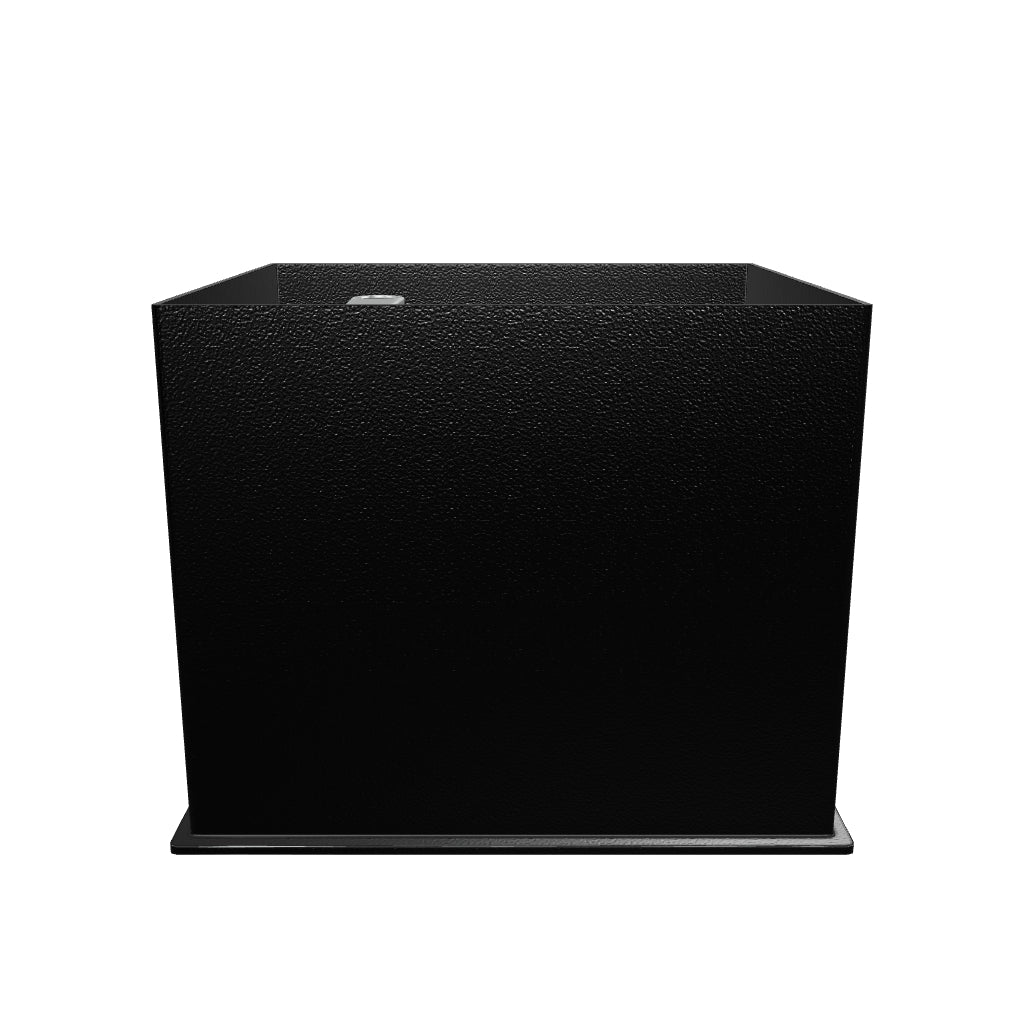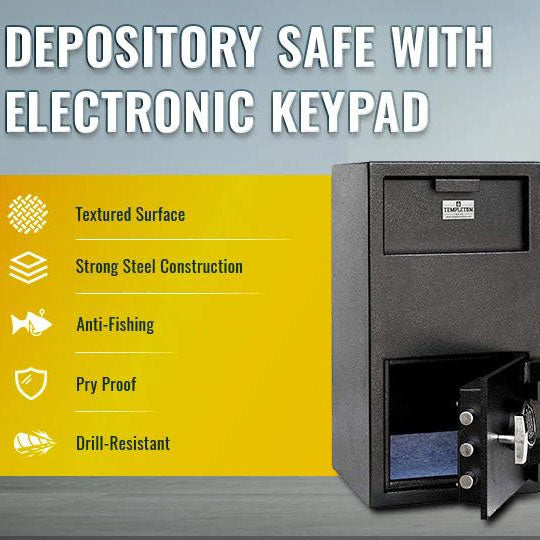The Ultimate Guide to Securing Your Business's Cash with a Depository Drop Safe
Keeping your business’s cash secure is crucial, and with theft and burglaries on the rise, a robust solution is more important than ever. That’s where a depository drop safe comes in. If you’ve been considering adding one to your security measures but aren’t sure where to start, this guide is for you. We’ll cover everything you need to know about depository drop safes, from choosing the right one to best practices for use.
What is a Depository Drop Safe?
A depository drop safe is a type of secure storage designed to protect cash, checks, and small valuables. Unlike traditional safes, they feature a drop slot or drawer, allowing authorized personnel to deposit items without needing to unlock the safe. This makes them ideal for businesses that handle a lot of cash, such as retail stores, restaurants, and offices.
Why Your Business Needs a Depository Drop Safe
1. Prevents Theft
One of the primary reasons to invest in a depository drop safe is to prevent theft. These safes are designed to be tamper-proof, with features like anti-fish baffles that prevent thieves from retrieving deposited items. By using a drop safe, you can significantly reduce the risk of both internal and external theft.
2. Convenient and Easy to Use
Depository drop safes are incredibly user-friendly. Employees can quickly deposit cash and checks without needing to access the safe itself, which streamlines operations and reduces the chance of theft during shift changes.
3. Secure Storage
With heavy-duty construction and advanced locking mechanisms, depository drop safes offer superior security for your business’s cash. Many models are also fire-resistant, providing an extra layer of protection in case of emergencies.
Choosing the Right Depository Drop Safe for Your Business
When selecting a depository drop safe, there are several factors to consider to ensure you choose the best option for your needs.
Size and Capacity
Think about the volume of cash and valuables your business handles daily. Safes come in various sizes, so choose one that accommodates your typical deposit amounts while leaving some room for growth.
Locking Mechanism
Depository drop safes come with different locking mechanisms, including key locks, combination locks, and electronic locks. Electronic locks are often the most secure and convenient, offering features like time-delay settings and audit trails.
Construction and Durability
Look for a safe made from thick, high-quality steel with reinforced doors and anti-pry features. The construction quality will directly impact the safe’s ability to withstand break-in attempts.
Additional Features
Consider additional features such as fire resistance, waterproofing, and internal lighting. These features can enhance the security and usability of your safe.
How to Properly Install and Maintain Your Depository Drop Safe
Installation Tips
-
Choose the Right Location: Install your safe in a discreet yet accessible location, away from public view. Ensure it’s bolted to the floor or wall for added security.
-
Professional Installation: If possible, have a professional install your safe to ensure it’s secure and properly anchored.
-
Regular Maintenance: Keep your safe in top condition with regular maintenance. Lubricate the locking mechanism, check for any signs of wear, and replace batteries in electronic locks as needed.
Maintenance Tips
-
Routine Checks: Regularly check the safe for any signs of tampering or damage. Address any issues promptly to maintain security.
-
Clean Regularly: Dust and debris can accumulate inside the drop slot and locking mechanism. Clean your safe periodically to ensure smooth operation.
-
Battery Replacement: For electronic locks, replace batteries annually or as needed to avoid lockouts.
Best Practices for Using Your Depository Drop Safe
Train Your Staff
Ensure all employees who handle cash are trained on how to use the depository drop safe correctly. Emphasize the importance of immediately depositing cash and checks rather than holding onto them.
Limit Access
Restrict access to the safe to a few trusted individuals. The fewer people who know the combination or have the key, the more secure your cash will be.
Use Time Delays
Many electronic safes have a time delay feature, which prevents the safe from being opened immediately after a deposit. This can deter thieves and reduce the risk of robbery.
Success Stories: How Businesses Benefit from Depository Drop Safes
Retail Stores
Retail environments are often bustling with activity, making them prime targets for theft. A depository drop safe allows cashiers to securely deposit cash throughout the day, reducing the risk of loss during busy periods.
Restaurants
In the restaurant industry, handling large amounts of cash is common. A drop safe ensures that cash from registers and tips is securely stored, protecting your hard-earned money from theft.
Offices
Even in office settings, a depository drop safe can be invaluable. It provides a secure place to store petty cash, checks, and other valuables, reducing the risk of internal theft and ensuring financial security.
Understanding the Different Locking Mechanisms on Depository Drop Safes
Key Locks
Key locks are straightforward and reliable. However, they require careful key management, as losing a key can compromise security.
Combination Locks
Combination locks offer a higher level of security without the need for keys. They can be mechanical or electronic, with electronic versions often featuring more advanced security options.
Electronic Locks
Electronic locks provide the highest level of security and convenience. Features can include time delays, multiple user codes, and audit trails that track who accessed the safe and when.
Common Mistakes to Avoid When Using a Depository Drop Safe
Not Bolting the Safe Down
Failing to secure your safe to the floor or wall makes it easier for thieves to remove it from your premises. Always ensure your safe is properly anchored.
Overlooking Maintenance
Neglecting regular maintenance can lead to malfunctioning locks or difficulty in opening the safe. Schedule routine checks to keep your safe in working order.
Sharing Access
Allowing too many people access to your safe increases the risk of internal theft. Limit access to trusted employees and change combinations regularly.
Future Trends in Security: What's Next for Depository Drop Safes?
As technology advances, so do security solutions. Future trends in depository drop safes may include:
- Biometric Locks: Using fingerprints or facial recognition for access.
- Smart Safes: Integration with mobile apps for remote monitoring and control.
- Enhanced Durability: Improved materials and construction techniques for even greater protection.
Conclusion
A depository drop safe is an essential investment for any business handling cash and valuables. By choosing the right safe, properly installing and maintaining it, and following best practices, you can significantly enhance your business’s security. Protect your assets and enjoy peace of mind knowing your cash is safe and secure.
Implementing a depository drop safe into your security measures can transform the way you handle cash and protect your business. Whether you run a retail store, restaurant, or office, this guide has provided you with the knowledge and tips to make an informed decision and ensure your business’s financial security.






























